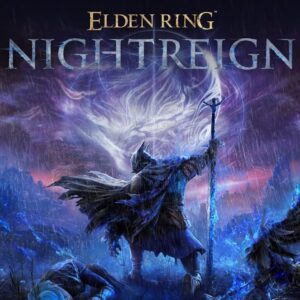Best Action Games with Amazing Environmental Storytelling
In the realm of action games, players often seek not only thrilling combat and adrenaline-pumping sequences but also a rich narrative that immerses them into the game’s world. Environmental storytelling, the art of using the game’s surroundings to convey a story, has become a powerful tool in enhancing gameplay experiences. This method allows players to uncover hidden tales through visual cues, objects, and the landscape itself, turning exploration into a narrative journey. In this article, we delve into the best action games that masterfully blend pulse-racing action with captivating environmental storytelling, crafting worlds that are as compelling as they are dangerous.
Immersive Worlds: Top Action Games with Stellar Environmental Storytelling
Action games with excellent environmental storytelling immerse players in worlds where the surroundings themselves tell a story. Here’s a detailed look at some of the best action games that achieve this through their environments.
The Last of Us Part II
Naughty Dog’s The Last of Us Part II is renowned for its rich narrative and deeply emotional journey. The environmental storytelling enhances this by presenting a world ravaged by a fungal apocalypse. Abandoned buildings, overgrown cities, and scattered remnants of past lives weave a tale of survival and loss. The details in the scenery provide context to the main story, making the world feel alive and dynamic.
Red Dead Redemption 2
Rockstar Games’ Red Dead Redemption 2 offers an open world where the environments play a crucial role in storytelling. The meticulous design of towns, wilderness, and various habitats showcases the life in the American frontier. The game’s dynamic weather conditions and changing landscapes reflect the passage of time and the harsh realities of life in the wild west.
BioShock Infinite
Set in the floating city of Columbia, BioShock Infinite by Irrational Games uses its environment to convey political and social commentary. The art-deco structures, propaganda posters, and the stark contrast between the opulent cityscape and the underbelly of poverty and conflict tell a compelling story about a society on the brink.
God of War (2018)
Santa Monica Studio’s God of War (2018) blends Norse mythology with an epic father-son journey. The game’s environments, from the lush forests to the icy realms, are filled with lore and mythological references. Hidden treasures, ancient ruins, and mysterious artifacts contribute to the expansive narrative, making exploration rewarding.
Horizon Zero Dawn
Guerrilla Games’ Horizon Zero Dawn presents a post-apocalyptic world dominated by robotic creatures. The ruins of a fallen civilization and the integration of advanced technology in nature narrate the story of humanity’s past mistakes and its struggle for survival. The game’s detailed landscapes and remnants of the old world serve as a testament to the catastrophic events that reshaped it.
| Game Title | Developer | Unique Environmental Elements |
|---|---|---|
| The Last of Us Part II | Naughty Dog | Overgrown cities, abandoned buildings |
| Red Dead Redemption 2 | Rockstar Games | Dynamic weather, diverse habitats |
| BioShock Infinite | Irrational Games | Art-deco structures, propaganda posters |
| God of War (2018) | Santa Monica Studio | Norse mythology, ancient ruins |
| Horizon Zero Dawn | Guerrilla Games | Post-apocalyptic, robotic creatures |
FAQs
What are some examples of action games with impressive environmental storytelling?
Several action games are renowned for their remarkable environmental storytelling. The Last of Us Part II is a prime example, utilizing the surroundings to tell a poignant story through abandoned buildings, haunting graffiti, and meticulously designed landscapes. BioShock also excels in this area, creating a dystopian underwater world where every room and corridor add layers to the narrative. Red Dead Redemption 2 provides a rich, immersive experience with its dynamic world, where every town, forest, and mountain tells a tale of the American frontier’s decline. Lastly, Dark Souls infuses its ruined castles and sunken cities with lore and history, allowing players to piece together the story from the environment itself.
How does environmental storytelling enhance the gaming experience in action games?
Environmental storytelling significantly enhances the gaming experience by immersing players in a vivid, believable world without relying solely on dialogue or cutscenes. It allows for subtle storytelling, where the environment speaks volumes about the history, culture, and emotional undertones of the game’s universe. This method creates a more engaging and interactive experience, as players are encouraged to explore and interpret their surroundings, leading to a deeper connection with the game. By weaving narratives through visual cues, such as the state of the environment, remnants of past events, and ambient sounds, developers can evoke empathy and emotional responses, making the storyline more impactful and memorable.
What elements contribute to effective environmental storytelling in action games?
Effective environmental storytelling in action games hinges on several key elements. Visual design is crucial, with attention to detail in textures, lighting, and placement of objects that convey the world’s story. Sound design also plays a vital role, using ambient noises, music, and sound effects to build atmosphere and hint at unseen events. Level design ensures that areas are logically structured and filled with contextual clues like broken furniture, personal items, or bloodstains that narrate past events. Cultural references, such as architecture styles, language, and artifacts, provide depth to the game’s world. Finally, player agency is essential, allowing players to explore and discover the story at their own pace, making the experience personal and engaging.
Why is environmental storytelling particularly significant in action games?
Environmental storytelling holds particular significance in action games due to the genre’s fast-paced and immersive nature. These games often require players to be constantly engaged and focused, making traditional narrative techniques like lengthy dialogues or frequent cutscenes less effective. By embedding the story within the environment, developers can maintain the game’s momentum while still delivering a rich narrative. This method also enhances replayability, as players may discover new details and interpretations on subsequent playthroughs. Moreover, it allows for non-linear storytelling, giving players the freedom to uncover the narrative in a way that feels natural and organic, which is particularly effective in open-world or exploration-heavy action games.



























Post Comment